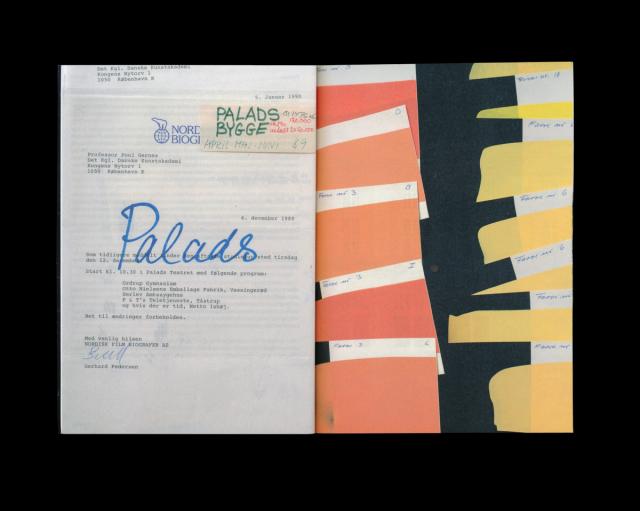




















With its vibrant facade, the decoration of the Palads Theatre has been a striking feature of Copenhagen’s cityscape since the work was unveiled to the public on an early September morning in 1989. Palads, as the decoration is commonly called, is not only one of Poul Gernes’ most famous works but also one of the most debated pieces of public art in Denmark.
PALADS is not a conventional art historical review of a work, but rather an experiment in art communication and a contribution to a current cultural debate.
The book includes three artistic contributions intended to activate the decoration, in line with Poul Gernes’ belief that art should not be a static, museum-bound object, but a communal matter that energizes people when they encounter it. Asta Lynge hired the world champion drone racer, Dane Grace, to film a dizzying flight through the Palads Theatre’s tower and across Axeltorv. The result is a series of stills presented as a 102-page-long flip animation. Najaaraq Vestbirk has photographed Palads during a snowy February morning, and Angharad Williams, who has never seen the decoration in person, has written a short story about loss and money, revolving around Poul Gernes’ distinctive plant motifs.
Art critic Kristian Vistrup Madsen reflects on Palads’ position within contemporary aesthetic trends, drawing from his uncle’s dental clinic, which was also decorated by Poul Gernes. Architect Natalie Körner has contributed a text about the decoration’s surroundings and the buildings that shape the urban space around the Palads Theatre, while curator Anders Kold provides a defence of Palads in a text originally written as a consultation response to the Copenhagen Municipality. A letter from Poul Gernes’ correspondence with the then city architect, Otto Käszner, is also included.
The aim of the publication is to view Palads from new perspectives to contribute to the understanding of the work’s relevance today and to document the decoration while it still exists.